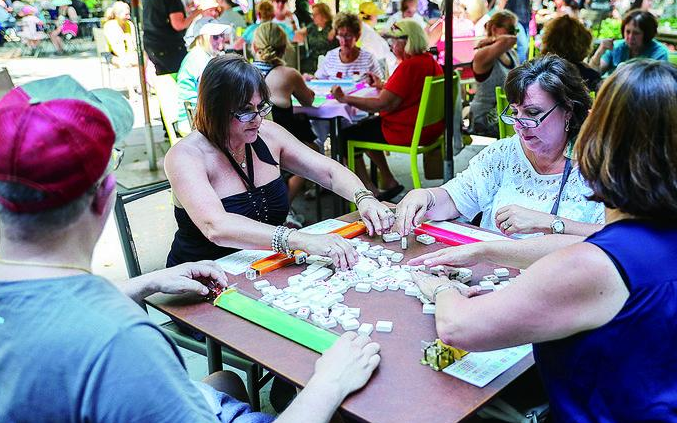Mahjong, which originated in China, has evolved to become a popular American pastime since it was introduced to the US in early 1920s.
自上世纪20年代传入美国以来,起源于中国的麻将已演变成为广受美国人欢迎的消遣方式。
Every Monday and Thursday afternoon in Bryant Park, one of most illustrious public places in downtown New York City, with the clink of tiles and ignited outbursts from drawing an unlucky piece, mahjong lovers gather around the table to play the game.
布莱恩公园是纽约市中心最有名的公共场所之一。在这里,每周一和周四下午,伴随着麻将牌的碰撞声和人们因摸到不合意的牌而大声嚷嚷的声音,麻将爱好者们围坐在桌旁大杀四方。
This year marks the fourth year of the Mahjong area in Bryant Park.
今年是布莱恩公园麻将区运行的第四个年头。

The Mahjong area now runs twice a week. On holidays there are even marathons with all kinds of Mahjong.Anyone can come to play and learn.
这一区域现在每周开放两次。节假日甚至还会举办各种麻将马拉松,任何人都可以来打麻将和学打麻将。
The National Mahjong League, which started with just 32 members when it was founded in 1937 to standardize the game, now "has 500,000 members, so it's very, very popular", according to Linda Fisher, Bryant Park's Mahjong area organizer.
布莱恩公园的麻将区组织者琳达·费希尔表示,致力于将麻将运动规范化的美国麻将联盟成立于1937年,当时仅有32名会员。现在该联盟已有50万会员,这说明麻将非常、非常受欢迎。
Culturally, mahjong was important in Chinatown in the 1920s and 1930s, as it gave Chinese Americans a cultural bond at a time when many other Americans saw them as "perpetual foreigners".
从文化上来说,麻将在20世纪20年代和20世纪30年代的唐人街十分重要,因为它在很多其他美国人视华裔美国人为“永久的外人”之时,给了他们一个文化纽带。













